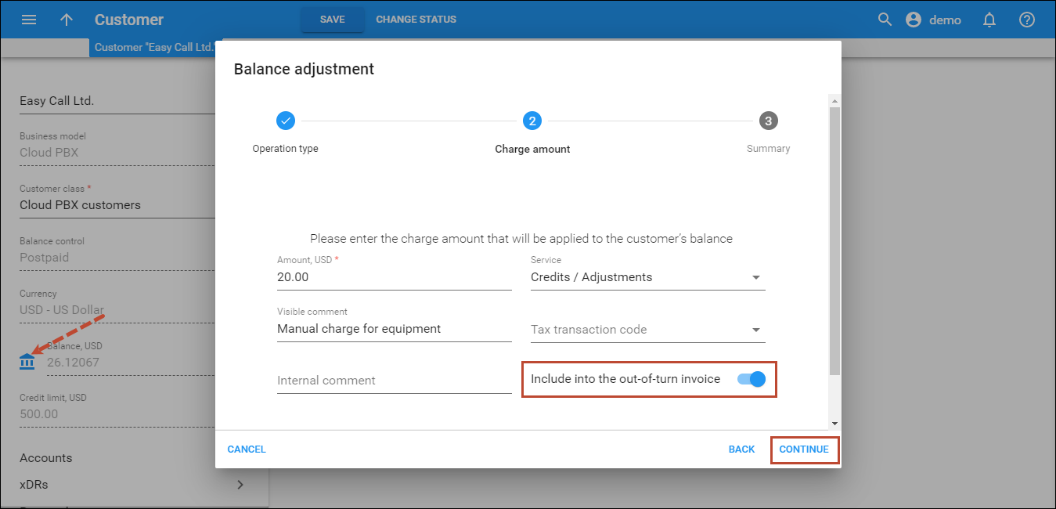Initial invoices
Sometimes you need to create a customer and immediately generate an invoice containing the activation fee, service charges for the current billing period, etc. Initial invoice makes it possible to apply and calculate these charges once the customer has been created. Initial invoice improves client service by saving customers’ time while providing you with a tool for generating early payments.
Consider the following example. The SpaceNet company signs a contract with a service provider and orders several IP phones for their employees. The service provider generates and sends an initial invoice, wherein all charges are immediately applied and calculated. SpaceNet receives this initial invoice and can now pay for all the IP phones they ordered. Thus, SpaceNet saves time by considering their future needs while the service provider benefits by immediately receiving their money.
The initial invoice tool is efficient as it optimizes the subscription process for new customers and improves the service provider’s cash-flow.
Midterm invoices
It might occur that in the middle of a billing period, a customer wants to pay for services consumed and does not want to wait until the end to receive an invoice. For such customers, administrators may now generate a midterm invoice.
Let’s assume that the company EasyCall, which has a monthly billing period, conducted a successful marketing campaign. Thus, EasyCall’s service usage is unexpectedly high at the beginning of the month. Instead of paying a lot of money at the end of the billing period, the company wants to pay for their services consumed up to the middle of the month (May 13th), and informs the administrator about this. On May 14th, the administrator generates a midterm invoice, which covers the period from the May 1st until May 13th. The invoice is then immediately sent to EasyCall. This way, the regular invoice that’s generated at the end of the billing period will cover the rest of the period from May 14th until May 31st.
Thus, midterm invoice functionality helps administrators to manage customers who prefer receiving several smaller invoices rather than a single large one, even if the total amount is the same.
Out-of-turn invoices
Sometimes invoices for extra services such as a technician visit or an equipment purchase need to be provided at the time when such service is rendered so the customer can immediately proceed with payment. This requires an invoice that is separate from the “normal” invoice generated at the end of the billing period. You can generate an out-of-turn invoice (to cover only a few specific items) on demand.
For example, let’s say your customer orders 10 additional IP phones for new employees. In this case, you just issue an invoice to cover the cost of those phones and send it to the customer. Once the customer pays, you fill the order.
All you need to generate an invoice is to apply one or more “Manual Charge” transactions that contain a description(s) that will be visible for a customer and then mark it/them as Include in Out-of-Turn Invoice. You can then generate an out-of-turn invoice with these transactions on the Invoice On Demand page.
Transactions included in an out-of-turn invoice won’t be reflected in the regular invoice issued at the end of the customer’s billing period. Thereafter, if one or more transactions aren’t included in a generated out-of-turn invoice during the corresponding billing period, they will be reflected in the regular invoice issued at the end of the customer’s billing period.



